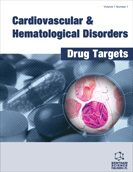Abstract
Obesity is increasing in people of Chinese background whether in China or in other countries. The purpose of this review is to discuss the associations of obesity in men and women of Chinese background with cardio-metabolic risk with specific attention to body fat distribution. Evidence suggests that current BMI and WC targets may actually underestimate the cardio-metabolic risk in Chinese compared to European populations from which they were derived. Through a number of investigations, we and others have identified that Chinese men and women tend to have higher cardio-metabolic risk factors at a given body size than people of European background (from which guidelines are generally derived). Our additional investigations have indicated that Chinese men and women have greater amounts of VAT, but similar amounts of DSAT at a given body fat than Europeans and it may be the higher VAT in Chinese people that is, in part, responsible for the greater cardio-metabolic risk in the Chinese. Further investigation of this topic should prove fruitful in shedding light onto the determinants of body fat accumulation and distribution that may help to inform obesity prevention and treatment strategies.
Keywords: Chinese, obesity, body fat, waist circumference, visceral adipose tissue, cardio-metabolic risk
Cardiovascular & Hematological Disorders-Drug Targets
Title:A Review of Obesity and Body Fat Distribution and Its Relationship to Cardio-Metabolic Risk in Men and Women of Chinese Origin
Volume: 12 Issue: 2
Author(s): Scott A. Lear and Iris A. Lesser
Affiliation:
Keywords: Chinese, obesity, body fat, waist circumference, visceral adipose tissue, cardio-metabolic risk
Abstract: Obesity is increasing in people of Chinese background whether in China or in other countries. The purpose of this review is to discuss the associations of obesity in men and women of Chinese background with cardio-metabolic risk with specific attention to body fat distribution. Evidence suggests that current BMI and WC targets may actually underestimate the cardio-metabolic risk in Chinese compared to European populations from which they were derived. Through a number of investigations, we and others have identified that Chinese men and women tend to have higher cardio-metabolic risk factors at a given body size than people of European background (from which guidelines are generally derived). Our additional investigations have indicated that Chinese men and women have greater amounts of VAT, but similar amounts of DSAT at a given body fat than Europeans and it may be the higher VAT in Chinese people that is, in part, responsible for the greater cardio-metabolic risk in the Chinese. Further investigation of this topic should prove fruitful in shedding light onto the determinants of body fat accumulation and distribution that may help to inform obesity prevention and treatment strategies.
Export Options
About this article
Cite this article as:
A. Lear Scott and A. Lesser Iris, A Review of Obesity and Body Fat Distribution and Its Relationship to Cardio-Metabolic Risk in Men and Women of Chinese Origin, Cardiovascular & Hematological Disorders-Drug Targets 2012; 12 (2) . https://dx.doi.org/10.2174/1871529X11202020113
| DOI https://dx.doi.org/10.2174/1871529X11202020113 |
Print ISSN 1871-529X |
| Publisher Name Bentham Science Publisher |
Online ISSN 2212-4063 |
 19
19
- Author Guidelines
- Bentham Author Support Services (BASS)
- Graphical Abstracts
- Fabricating and Stating False Information
- Research Misconduct
- Post Publication Discussions and Corrections
- Publishing Ethics and Rectitude
- Increase Visibility of Your Article
- Archiving Policies
- Peer Review Workflow
- Order Your Article Before Print
- Promote Your Article
- Manuscript Transfer Facility
- Editorial Policies
- Allegations from Whistleblowers
- Announcements
Related Articles
-
Impact of Pulmonary Vascular Resistances in Heart Transplantation for Congenital Heart Disease
Current Cardiology Reviews Role of Mammalian Target of Rapamycin in Atherosclerosis
Current Molecular Medicine Impact of Genetic Polymorphisms and Drug – Drug Interactions on Clopidogrel and Prasugrel Response Variability
Current Drug Metabolism Relaxin: New Functions for an Old Peptide
Current Protein & Peptide Science Cardiovascular Complications of HIV Infection and Treatment
Cardiovascular & Hematological Agents in Medicinal Chemistry Prognostic Value of White Blood Cell Counts and C-reactive Protein in Acute Ischemic Stroke Patients After Intravenous Thrombolysis
Current Neurovascular Research Drug-induced Inhibition and Trafficking Disruption of ion Channels: Pathogenesis of QT Abnormalities and Drug-induced Fatal Arrhythmias
Current Cardiology Reviews Carbonyl-Scavenging Drugs & Protection Against Carbonyl Stress-Associated Cell Injury
Mini-Reviews in Medicinal Chemistry Steroid Hybrid Systems: New Molecular Entities with Potential Therapeutical Spectrum
Current Drug Therapy Drug-Induced Thromboembolic Events in Patients with Malignancy
Cardiovascular & Hematological Disorders-Drug Targets Toll-Like Receptors: Link between “Danger” Ligands and Plaque Instability
Current Drug Targets The Nutrigenetics and Pharmacogenetics of Vitamin D Pathways
Current Pharmacogenomics and Personalized Medicine ATP-Sensitive K+ Channel Openers: Old Drugs with New Clinical Benefits for the Heart
Current Vascular Pharmacology Resveratrol and Stroke: from Chemistry to Medicine
Current Neurovascular Research Pharmacotherapy & Surgical Interventions Available for Obesity Management and Importance of Pancreatic Lipase Inhibitory Phytomolecules as Safer Anti-Obesity Therapeutics
Mini-Reviews in Medicinal Chemistry The Physiological/Pathophysiological Significance of Vitamin D in Cancer, Cardiovascular Disorders and Beyond
Current Drug Metabolism Probiotics/Prebiotics in Viral Respiratory Infections: Implication for Emerging Pathogens
Recent Patents on Biotechnology Nitric Oxide is a Central Common Metabolite in Vascular Dysfunction Associated with Diseases of Human Pregnancy
Current Vascular Pharmacology Formulated Squalene for Food Related Applications
Recent Patents on Food, Nutrition & Agriculture Cardiovascular Disease and Dyslipidemia: Beyond LDL
Current Pharmaceutical Design


























